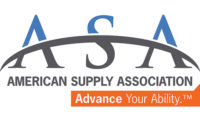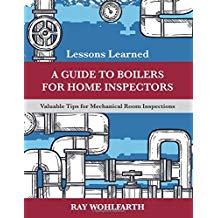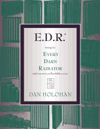
|
| Emergency eyewash stations mush be accessible within 10 seconds of workers, according to the American Nation Standards Institute. Photo courtesy of Haws Co. |
Workplace safety has seen great improvements the past several decades, at least due in part to regulatory pressures that define acceptable limits for risks.
These regulations establish safeguards and emergency measures in the event of an incident. Integral to these advancements is the current state-of-the-art emergency showers and eyewashes.
The American National Standards Institute benchmark that guides functional, placement and maintenance requirements for emergency showers and eyewashes is ANSI Z358.1, which last was revised in 2009. In the standard’s current form, it is the clearest and most useful tool for preparing to meet most workplace spill, splash and blown-particulate incidents.
Here is a checklist to help engineers understand some of the significant requirements included in the standard.
It should be understood that compliance is not a once-a-year or once-a-month endevaor. Compliance is a 24/7 requirement. Accordingly, emergency showers and eyewashes are required to be activated weekly, with a more thorough evaluation on a yearly basis. This requirement is established in sections 4.6.2, 4.6.5 and others. Today, many companies choose to have a third-party inspection performed for the annual evaluations. This provides an added measure of credibility to the review process.
Beyond that, the following areas should be reviewed:
- Emergency showers, eyewash and combination showers/eyewash stations must be accessible within 10 seconds; must be on the same level as the hazard; and the path of travel shall be free of obstructions (sections 4.5.2, 5.4.2, 6.4.2, 7.4.2);
- Emergency shower, eyewash and combination shower/eyewash stations should be designated by highly-visible signage (sections 4.2, 5.2, 6.2, 7.4.3) and be positioned so the sign is visible in all areas served by that specific equipment;
- Control valves on emergency showers, eyewash and combination shower/eyewash equipment should be designed so they can be moved from “off” to “on” in one second or less and to remain open until intentionally closed (sections 4.2, 5.2, 6.2, 7.2);
- Spray-nozzle outlets on eyewashes and eye/face washes should be protected from airborne contaminants when idle. Whatever means are used to protect them should not require a separate motion (from equipment activation) to remove the protection for equipment use (sections 5.1.3, 6.1.3);
- Plumbed and self-contained eyewash equipment must be capable of delivering flushing fluid to the eyes at a flow of no less than 0.4 gpm for the required 15-minute irrigation cycle (sections 5.1.6, 6.1.6);
- For eyewashes, a means must be provided to ensure a controlled flow of flushing fluid to both eyes simultaneously (Section 5.1.1). With respect to eye/face washes, the standard includes both eyes and face (Section 6.1.6);
- There should be a minimum distance of 6 in. between the eyewash outlet nozzles and any adjacent obstruction, such as walls, etc. (Section 5.4.4);
- The proper heights for eyewash or eye/face wash heads is between 33 in. and 45 in. above the floor (Section 5.4.4);
- Drench showers must deliver a flow at a minimum of 20 gpm (Section 4.1.4);
- The proper height for a drench shower or combination drench shower and eyewash showerhead is between 82 in. and 96 in. above the floor (Section 4.1.2);
- Drench shower flow patterns should be a minimum of 20 in. wide at 60 in. above the floor (Section 4.1.5);
- There should be no barrier closer than 16 in. from the center point of the installed emergency drench shower or combination shower and eyewash (Section 4.1.5);
- Combination shower and eyewash equipment is subject to the same individual component requirements, even when those components are used simultaneously. This means, among other things, that flow and pattern requirements for the shower and eyewash remain in effect during simultaneous use. Sufficient pressure and volume of fluid to “drive” both features is necessary (Section 7.4.4);
- Combination shower and eyewash equipment must be capable of simultaneous use of the shower and eyewash or face wash by the same user (Section 7.4.4); and
- Flushing fluid must be tepid, which by the standard established guideline is between 60° F and below 100° F for the full 15-minute use cycle (Section 7.4.4).
Checks and balances
There are other requirements established by ANSI Z358.1-2009, but these are the most commonly overlooked or ignored. Every month there are published recaps of the OSHA violations processed and the fines levied – typically in the six-figure range – against companies who fail to live by the requirements.
Aside from the potential punitive regulatory assessments, there is the potential for negligence claims and litigation. For example, a company that incurred a $213,000 penalty for a “blocked eyewash” would have been better off compared to negligence associated with an employee who was permanently blinded.
The tepid water requirement has been in Z358.1 for a long time. Prior to 2009, it was left to interpretation as to what was the acceptable temperature range. In the revision, the standard was clarified to the specifics outlined above. Tepid water is essential in assuring that an injured worker remains under the shower or submersed into an eyewash for the required 15 minutes.
Cutting short on the required time for washing the eyes out risks the full removal of the hazardous material and fails to adequately cool the affected area.
Similarly, remaining in contact with the water supplied by most municipal authorities for that same time can lead to hypothermia. The tepid water requirement is a solid one. However, it is estimated that the vast majority of multiple shower and/or eyewash installations in the U.S. still do not provide tepid water.
Just providing emergency showers and eyewashes isn’t enough. We need to monitor their condition and the areas surrounding each installation. We also need to stay current with the state-of-the-art product features and designs. Access, function and quality of care are the keys.
Author bio: Casey Hayes is the director of Haws Integrated at Haws Corp., located in Sparks, Nev. Hayes can be reached at 775/353-8320 or casey@hawsco.com. For more information on the full range of ANSI-compliant solutions, visit www.hawsintegrated.com. To arrange a third-party inspection at your facility, call 888/640-4297.





